Chiang Mai Borsang and Sankampang Village Attractions
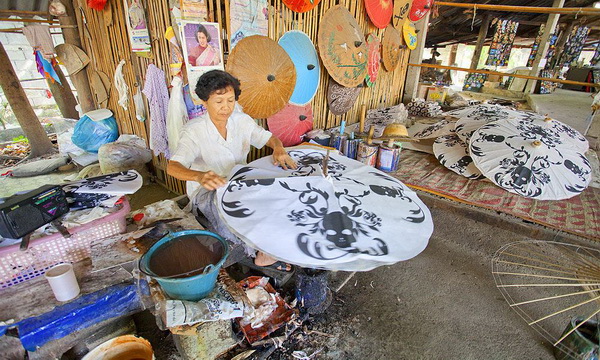
Sankampang Road
The arts and crafts of any country are a livings examples of the region’s rich past and heritage. With skills that are passes down for generations, the art of Thai crafts is a reflection of Thai people’s creativity and ingenuity. Chiang Mai is probably the most well-know city in Thailand where old traditions and cultures still remain to be seen today, and its people have often been note for their gift of the country, they had time to invest in the creative and the beautiful, time to spend on the painstaking detail and the seemingly insignificant.
If you plan to go shopping in Chiang Mai, Thailand and save your money to buy the quality craft pieces and handmade products, Borsang and Sankampang Village is the best answer.
Shopaholics will be thrilled by the many outlets along the Chiang Mai-Sankampaeng Road, particularly since you can wander around the workshops and watch the craftsmen at work. There are several shops, showrooms, and factories extending along a 9km strip here. Talk to any concierge or travel agent about a full- or half-day shopping tour.
The Chiang Mai – Sankampang road has become a living display of inventiveness, and the elaborate design proof of perseverance in handicrafts. Running for 13 km. to the North of Chiang Mai, the rode is lines with factories and showrooms selling craft goods of all descriptions. Sankampang is the most popular destination for tourists to discover the making of Thai handicrafts and to shop for souvenirs; with some knowledge of comparable goods elsewhere, it is possible to negotiate reasonable prices. Each factory specializes in one craft and it is possible to see demonstration’s of artisans and craftsmen at work. So don’t miss this opportunity of discover the making of Thai Silk, celadon, wood carving, sterling silver, lacquer ware, jewelry, saa paper, umbrellas and much more : jump in a taxi and discover these beautiful skills passed down for generations.
Woodcarving
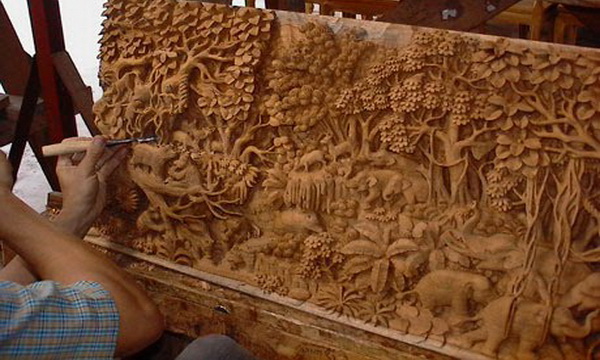
Wood carving is considered one of Thailand’s finest traditional handicafts that have been passed down from the Sukhothai period (1238 – 1438 ). The evidence of the long existing sculpture art can be found on windows, door and other wooden parts of Buddhist temples, It’s easy to understand why ornamental wood carving in Thailand is such a highly specialized skill when you consider just how much intricate detail goes into every item created. Whetherit’s a tiny carved wooden bowl or an enormous engineered wooden structure, the sheer professionalism of the craft just cannot be faulted.
Thai Silk
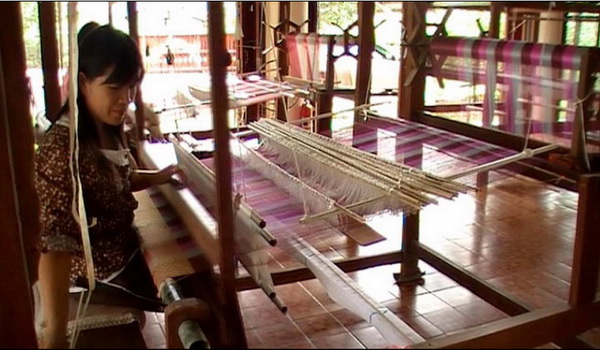
Silk is one of the most valued an sought-after fabrics in the world. Yet, the origins of the production of this most exquisite material remains veiled in mystery, throught we belive it comes from China.
At the Thai Silkk Village you will discover the production oof Thai Silk that begins with the bombyx mori, a small worm that comes from the eggs of silk moth and that eats leaves of mulberry trees before building a cocoon from its sprittle. The bombyx mori usually produces silk thread, ranging from light gold to very light green, with lengths from 500 to 1,500 yards per cocoon. A single thread filament is too thin to use on its own so Thai women combine many threads to produce a thicker, usable fiber. They do this by hand-reeling the threads onto a wooden spindle to produce a uniform strand of raw silk. The process is a tedious one as it take nearly 40 hours to produce a half kilogram of silk. The production will then be soaked in hot water and bleached before dyeing, then woven a using a traditional hand operated loom.
Chiang Mai Celadon
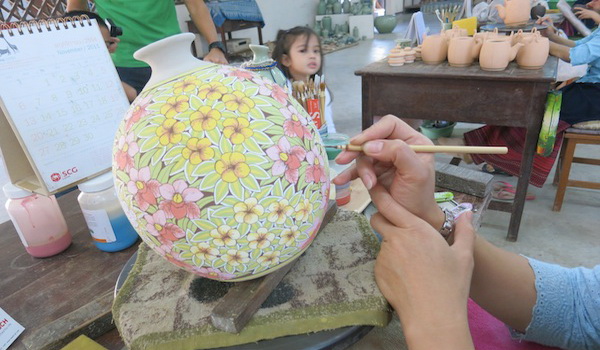
Chiang Mai is the centre of Thailand’s celadon industry. Among it most prized items is the distinctive Celadon pottery, so named for its unique glaze, the result of certain ingredients mixed with wood and ashes applied in a carefully controlled step by step process. The clay is first treated with additives which are then let in the shade and thrown. After bisque firing at a temperature of 800 C, the glaze is applied. The piece is then placed in the kiln for a second firing at a temperature of 1,250 C, which gives it its inimitable, finely cracked finish. Celadon pottery is elegantly simple in tones of the palest gray-greens. Today’s celadon centres on Sankampaeng Road. Baan Celadon and Siam Celadon factories use the same process as previously.
Chiang Mai Gem Gallery
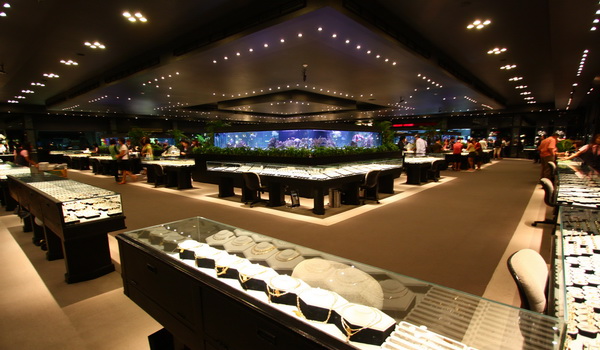
Welcome to World Gems Group the famous jewelry store and the biggest Jewelry store, we have 6 chain branches located in the heart of 4 major city in Thailand, Bangkok, Pattaya, Phuket and Chiangmai, all our jewelry have received the international ISO 9002 and ISO 9001:2000 with vast varieties Finished Design Jewelry been displayed.we have a certificate of GIA also. Our store has a specific jewelry masterpiece, gems, birthstone, wedding ring and more jewelry to choose from with producing and designing by our professional staff.
Our store office section have a high technology laser welder machine and advance Computer Gold Check up of our expert Gemologist, everytimes you visit and also our demonstration workshop is allow you to see how the production of jewelry in Modern World. Our store is a member of Thai Gems and Jewelry Trades Association of Thailand and the Thai Chamber of Commerce. ” Get Special price for your own direct booking to our Transportation” Our service providing creation of piece such as necklaces, bracelets, rings, pendants, earrings etc. Some other piece is a master piece including a high quality of precious stone such as diamon, sapphire, ruby, emerald, pink sapphire, cabochon, amethyst, garnet, peridot, jade, quartz, aquamarine, amethyst quartz, bluestare sapphire, cat’s eye, citrine, imperial topaz, tanzanite, smoky quartz, etc and we have the craftmanship on duty to create your instant design so that you would be accept a high impress with our service and product.
Chiang Mai Umbrella Village
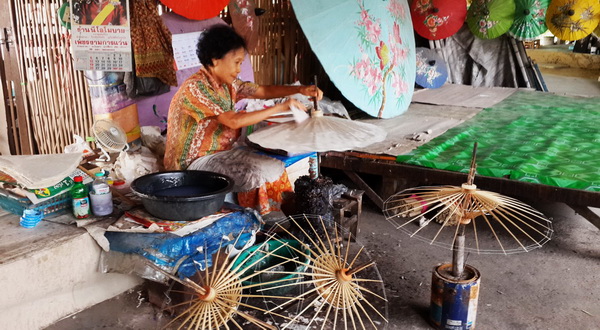
For more than 100 years, the village of Borsang that is lacates on Sankampaeng road, has been associated with the production of umbrellas made from Saa paper, derived from mulberry tree bark.
The local history has been told that there was a monk travelling to neighbouring Myanmar where he came cross Saa paper umbrellas that offered protection against both the sun and the rain. He returned with the protection technique and introduced the umbrella to the elders of Borsang village, who added their own first, making umbrellas was just a hobby to do after the annual rice crop, wich could supplement villager’s earnings. The time passed by and the production of Saa paper umbrellas gradually flourished, which prompted villages to establish a handicraft c0-operative in 1941. In time, the production grew up to be made out of saa paper and silk, and images of birds, elephants and flowers were intricately hand-painted on the umbrellas Today, the production of Umbrellas from Borsang village is exported through the world and it can been seen at trades in Europe, in a wide variation of sizes and colours.
Chiang Mai Silver Ware

Formerly introduced in Thailand by the Indian traders, the original techniques of silverware and jeweley making have slowly evolved through the influences of various periods of art. Particularly in Northern Thailand where silver work originated as a result of Buremese and Shan methods and styles, and developed rapidly afterwards to become a combination of techniques and designs,
The ethnic minority peoples (Tibeto-Buemese, Hmong and Yao, the Shan and Tai minorities of Vietnam and Laos) have had much influence on Thai silver works as well. Types of adornment and jewellery, crafted by one minority people have been adopted by other minorities; the present adornment and jewellery range of some minorities; the present adornment and jewellery range of some minorities also includes both ancient and more recent types.
The silver in Thailand is commonly used for jewellery, pictures made out of silver, picture frames, dishes,, silverware, purses and much more. The most common out of all of these uses are the jewellery and Chiang Mai is one of the places where the fitnest Thai silverware is produced, with skills passed down for centuries. Chiang Mai silversmiths like to make bracelets, rings and earrings. They have a very special chisels that they use to carve out designs in the bracelets and other jewelry. The silver pictures are also commonly made there. They get big sheets of silver paper and take the chisels to cave out the designs.
Note : Wheelchair user is accessible
Our services :
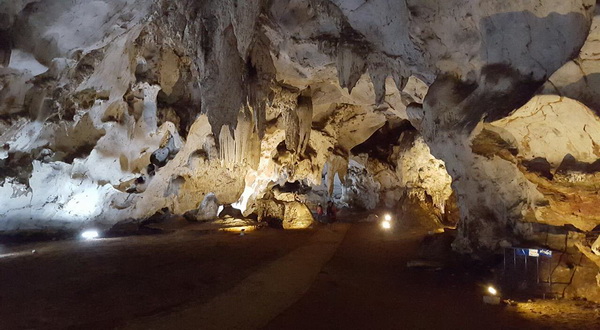
Before the springs it is worth taking the turning to the left to visit the Muang On caves. At the foot of the hill is an attractive Chinese Temple. The road then climbs much higher up the hill to the caves. A narrow scaled road leads up the side of a hill to a small car park. From there you have to climb up a steep naga stairway for about 100 meters before reaching the entrance to the caves. Make sure the lights have been switched on before descending into some big, deep caverns. A large seated Buddha image amidst stalactites creates an impressive effect. A 30 foot long “Reclining Buddha” named Pro Garoona Sai Yars. Built four years ago, this relaxed ‘fella’ looks strangely out of place in an environment that most people find “spooky” to say the least. The basement of the cave is littered with tiny images resting on small niches in the cave wall. These are dwarfed by a handsome meditative Buddha image that sits high up on a ledge just above a naturally formed basin of water. But the centerpiece of this spacious grotto is a gigantic stalagmite named “Jedee Mae Nomm Fah”. This awesome formation of nature is thirty feet high and ten feet in diameter. Wrapped around it are several brightly colored sashes in red, yellow and orange, resulting in projecting a surreal effect upon the entire scene, of the cave floor. It is an astounding sight.
A visit to the Muang On caves is only for the fit. Firstly there is a long climb up a Naga staircase from the car park, before reaching the entrance to the caves. The caves are well lit and there are young guides available to point out the major sites, which are also Buddhist shrines. However to reach the famous stalagmite it is necessary to climb down a long concrete staircase, which means it is along climb back up to exit the caves.

After visiting the factories on Sankampaeng road, and if you are in love with nature then head away from the tourist trail and visit the Sankampang Hot Springs. This Ideal destination is located 40 km. from Chiang Mai town and the journey is picturesque with scenic views of the mountains, through foot hills, paddy fields and plam nut oil tree plantations. The natural spring of Sankampaeng Hot Spring is emitting water with high sulphur content and said to cure ailments and rejuvenate the body. The water seems to be gushing out from a deep source someware beneath the ground and its temperature is at 100 degrees centigrade. The park covers an area of about 35 acres and has been developed into a series of natural hot springs, gardens, small canals, a water fall-swimming pool and private bungalows with bath to enjoy the natural benefits of the spring. At the entrance you can buy quail and hens eggs in nest woven bamboo baskets to boil in special tanks within the park. Many spa options such as foot massage, Thai massage and scrub are available ranging from 100-200 Baht.
Sankampaeng Hot Spring is an ideal destination for those interested in health and well-being. Although there is a sight swiff of sulphur, it does not affect this very quiet place, which is perfect to enjoy an afternoon with family and friends. If you wish you can also spend the night there; there are bungalows and camping tents available for rent.
Sankampang Map









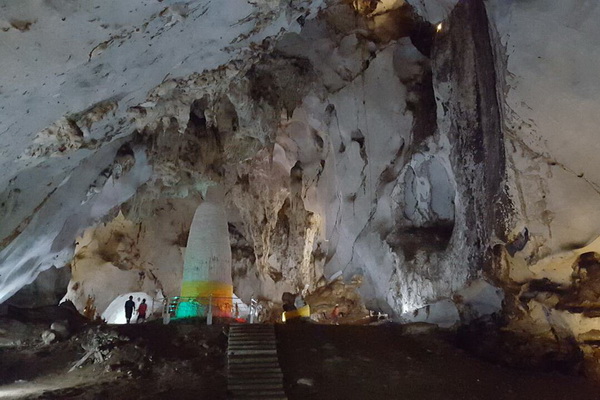
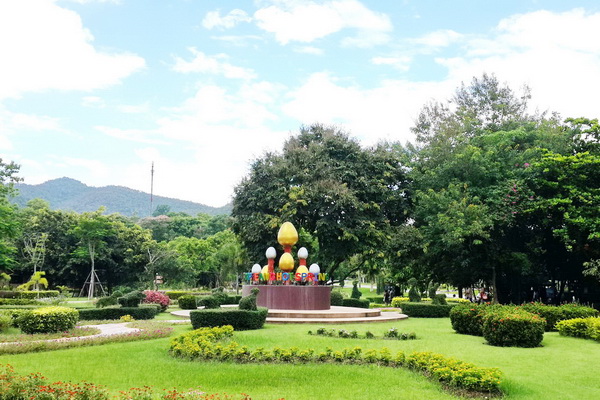
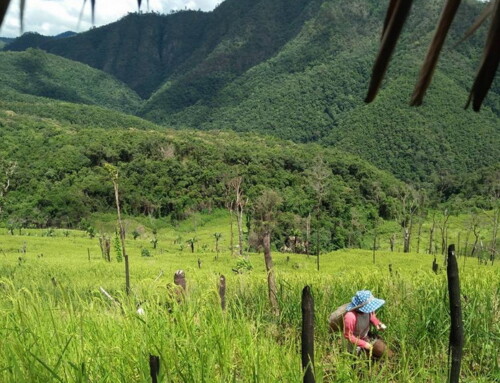
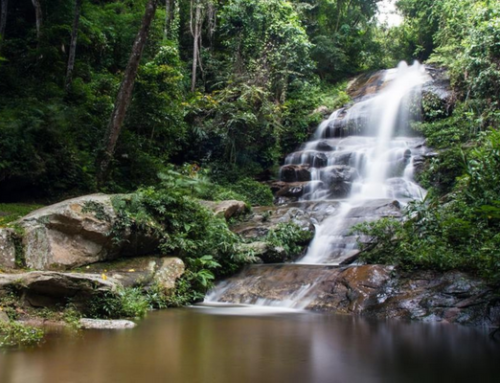
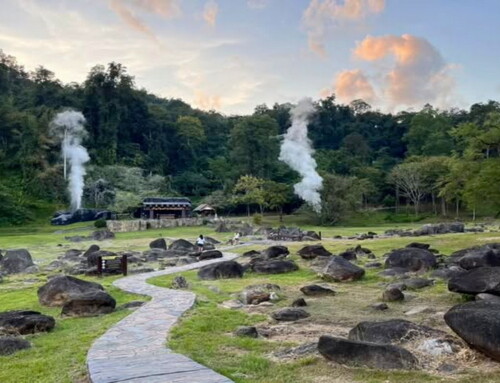
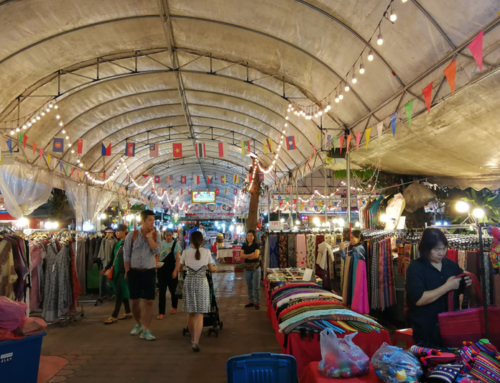
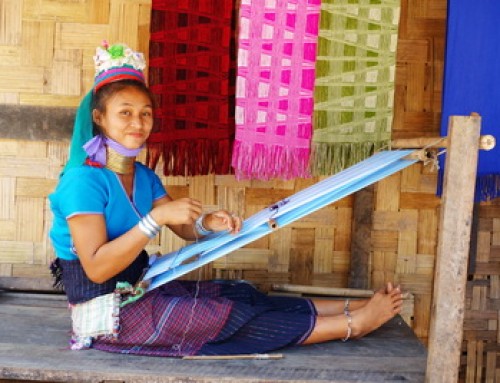

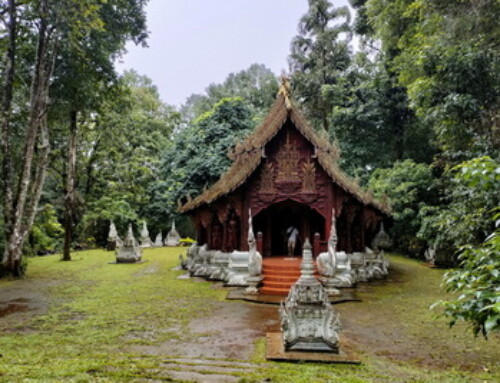



Leave A Comment